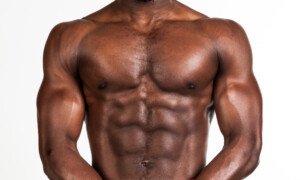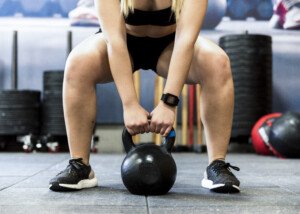For big shoulders, does it really come down to heavy weights with impaired range of motion or light weights with full ROM?
Can you build big shoulder muscles with light weights? It may seem intuitive that using heavy weights is the best way to build big shoulder muscles.
But the problem with heavy weights is that, depending on the routine, they will disrupt range of motion and may encourage cheating, thereby ultimately shortchanging your shoulder muscles – and preventing the growth you seek.
On the other hand, you don’t want to use weight loads that are too light, either.
“In order for hypertrophy (muscle development) to occur in a muscle group, that muscle group must be trained with basic overload principles,” says Juliet Deane, Elitefts staff member, Elitefts-sponsored figure athlete, personal trainer (NSCA) and co-owner of The Training Studio, NJ.
She continues, “The shoulders need to be trained to stimulate muscle growth by stressing the area with mid-volume rep ranges from 8-15 with challenging weights to complete the set.
“Studies show that reps six and below do not significantly increase muscle size, but with reps of 8-15, depending on your supportive nutrition, is the range you can expect to get the greatest results.

Shutterstock/Artem Furman
“Reps above that will elicit a muscular conditioning response, which also does not greatly affect hypertrophy.”
There is something very important to consider here.
If you choose a weight and simply count out reps to between eight and 15, then set the weights down, this doesn’t mean you’re working out in a way that maximizes growing big shoulder muscles.
That rep range of 8-15 must be very difficult to complete.
You can’t just go through the motions with a little elbow grease and expect to build your shoulder muscles.
The entire set must be stressful, and the last rep (be it the eighth, tenth or fifteenth) must take all you have to complete it.
And at the conclusion, your shoulders should be crying.
Deane explains, “The actual weight of the dumbbells is irrelevant, and light is a relative term or even a matter of opinion.
“What counts is if the weight is challenging for you. If the weights feel light, you are not likely going to stimulate the muscles enough in the optimum muscle building rep ranges; in effect, not producing the results of bigger shoulders you are looking for.”
Many other variables are at play when it comes to building big shoulders.
The shoulder muscles consist of three heads: front, middle and back.
All three heads must be worked, and there are many ways to do this.
Some people swear by upright rows, though these are very uncomfortable for some folks as well.
Another favorite is the lateral or side lift with dumbbells.
However, if the weight is too heavy, your form will suffer enough to impede shoulder muscle growth, even though it may seem like you have “completed” your eight or 10 reps.
A classic shoulder building routine is the barbell military press. Pulley systems are also popular.
At the end of your shoulder routine, these muscles should be burning mad, from front to back.
If you can barely lift your arms later on that day, you did a good job.
Make sure you support your workouts with a protein-rich, high-carb meal within 45 minutes after.
 Juliet Deane is also certified as a Russian kettlebell instructor and USAW Olympic lifting coach.
Juliet Deane is also certified as a Russian kettlebell instructor and USAW Olympic lifting coach.
 Lorra Garrick is a former personal trainer certified by the American Council on Exercise. At Bally Total Fitness she trained clients of all ages for fat loss, muscle building, fitness and improved health.
Lorra Garrick is a former personal trainer certified by the American Council on Exercise. At Bally Total Fitness she trained clients of all ages for fat loss, muscle building, fitness and improved health.
.



























